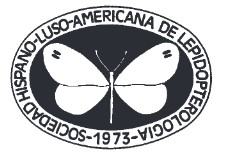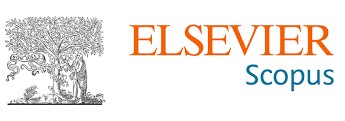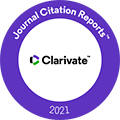Biology of Brassolis sophorae (Linnaeus, 1758) under laboratory conditions using Roystonea oleracea (Jacq.) O. F. Cook (Arecaceae), as food, Venezuela (Lepidoptera: Nymphalidae, Brassolinae)
DOI:
https://doi.org/10.57065/shilap.266Keywords:
Lepidoptera, Nymphalidae, Brassolinae, Brassolis, Roystonea, VenezuelaAbstract
The development time of the larval stages of Brassolis sophorae (Linnaeus, 1758) was determined, as well as some aspects of their behavior, using Roystonea oleracea (Jacq.) O. F. Cook as food, under laboratory conditions. This species is considered a pest in Araceae plantations. The average incubation time of the eggs was 27.67 days and their viability varied between 97.64% and 84.74%. The total development of the larval stage passes through seven instars in an average time of 120.61 days. When the larvae reach the seventh instar, they leave the nest or shelter and look for a safe and dry environment, this is done solitarily, and larval aggregation is no longer observed. The prepupa lasts an average of 3.15 days and is characterized by the cessation of feeding and movement. The average duration of female pupae was 15 days and for males, the duration was 14.44 days. The average longevity under laboratory conditions for the adult stage was 9.66 days. Males were found to start their rapid and irregular flight activity earlier than females, at 5:30 p.m. and females at 6:00 p.m. but females remained active longer than males.
Downloads
Global Statistics ℹ️
|
356
Views
|
211
Downloads
|
|
567
Total
|
|
References
Bastos, J. A. M. (1967). Notas biológicas sobre Brassolis sophorae L. (Lep., Brassolidae) I. Perda de peso no periodo pupal. Revista Brasilera de Entomología, 12, 67-71.
Dyar, H. G. (1890). The number of molts of lepidopterous larvae. Psyche, 5, 420-422. DOI: https://doi.org/10.1155/1890/23871
FUSAGRI FONCOPAL (1976). Coco (Serie A. 40). Cagua.
Gaines, J. C., & Campbell, F. L., 1935. Dyar’s rule as related to the number of instars of the corn ear worm Heliothis obsoleta (Fab.) collected in the field. Annals of the Entomological Society of America, 18, 445-461. DOI: https://doi.org/10.1093/aesa/28.4.445
Genty, P. H., Desmer De Chenon, R., & Morin, J. P. (1978). Les ravageurs du palmier a’huile en Amérique Latine. Olégineux, 33(7), 321-419.
Lever, R. J. (1970). Las plagas del cocotero. Estudios Agropecuarios (Vol. 77). FAO.
Lepesme, P. (1947). Les insectes des palmiers. Paul Lechevalier.
Lima, A. Da Costa (1950). Insetos do Brasil. 6o Tomo. Lepidópteros 2da. Parte. Serie Didática No. 8. Escola Nacional.
Menezes, F., & Zamith, A. (1954). Contribuição para o conhecimento da Brassolis sophorae (Linnaeus, 1758), B. astyra Godart, 1821 (Lepid. - Brassolidae) e de seus inimigos naturais. Anais da Escola Superior de Agricultura Luiz de Queiroz, 11(1), 61-207. DOI: https://doi.org/10.1590/S0071-12761954000100009
Rai, B. K. (1973). Brassolis sophorae and Castnia daedalus: chemical control of the major pests of coconut in Guyana. Journal of Economic Entomology, 66(1), 177-180. DOI: https://doi.org/10.1093/jee/66.1.177
Peterson, A., & Haeussler, G. (1928). Some observations on the numbers of larval instar of the oriental peach moth Laspeyresia molesta Busk. Journal of Economic Entomology, 21, 846-852. DOI: https://doi.org/10.1093/jee/21.6.843
Remillet, M. (1988). Catalogue des insectes ravageurs des cultures en Guyane Française. Institut Francais de Reserche Scientifique pour le Développment en Coopération, Collection Etudes et Théses. Editions de L’ORSTOM.
Ruszczyk, A. (1996). Spatial patterns in pupal mortality in urban palm caterpillars. Oecologia, 107, 356-363. DOI: https://doi.org/10.1007/BF00328452
Stauffer, F., Clavijo, J., & Bevilacqua, M. (1993). Ataque de Brassolis sophorae (L., 1758) (Lepidoptera: Nymphalidae: Brassolinae) a las palmas (Palmae) del Parque del Este "Rómulo Betancourt", Caracas, Venezuela. Boletín de Entomología Venezolana, N. S., 8(1), 95-103.
Stichel, H. (1932). Brassolidae. In E. Strand. Lepidopterorum Catalogus (Vol. 51). W. Junk. DOI: https://doi.org/10.5962/bhl.title.124190
Taylor, R. L. (1931). On “Dyar’s rule” and application to saw fly larvae. Annals of the Entomological Society of America, 23, 451-466. DOI: https://doi.org/10.1093/aesa/24.3.451
Travassos Filho, L. (1954). As lagartas que comem as folhas das palmeiras. Flores do Brasil, 1954, 35-38.
Yépez, G., Fernández, Y., F., & Clavijo, J. (1985). Presencia de Brassolis sophorae (L.) (Lepidoptera: Brassolidae) causando daños en palmas de chaguaramos, Roystonea oleraceae (Jacq.), en el Estado Carabobo, Venezuela. Boletín de Entomología Venezolana N. S., 4(3), 23-24.
Zanetti, R., Vilela, E., Zanuncio, J., & Moura, J. (1999). Búsqueda de alimento y marcación de trillo por larvas de Brassolis sophorae. Revista de Biología Tropical, 47(4), 1035-1038.
Downloads
Published
How to Cite
Issue
Section
License
Copyright (c) 2022 Yasmín Contreras-Peña, José Clavijo-Albertos, Rodolfo Marcano-Brito

This work is licensed under a Creative Commons Attribution 4.0 International License.
The author SS retains his trademark and patent rights to any process or procedure within the article.
The author retains the right to share, distribute, perform and publicly communicate the article published in SHILAP Revista de lepidopterología, with initial acknowledgement of its publication in SHILAP Revista de lepidopterología.
The author retains the right to make a subsequent publication of his work, from using the article to publishing it in a book, provided that he indicates its initial publication in SHILAP Revista de lepidopterología.
Each submission to SHILAP Revista de lepidopterología must be accompanied by an acceptance of copyright and acknowledgement of authorship. By accepting them, authors retain copyright of their work and agree that the article, if accepted for publication by SHILAP Revista de lepidopterología, will be licensed for use and distribution under a "Creative Commons Attribution 4.0 International" (CC BY 4.0) licence that allows third parties to share and adapt the content for any purpose giving appropriate credit to the original work.
You may read here the basic information and the legal text of the license. The indication of the CC BY 4.0 License must be expressly stated in this way when necessary.
As of 2022, the content of the print and digital version is licensed under a "Creative Commons Attribution 4.0 International License" (CC BY 4.0), licence that allows third parties to share and adapt the content for any purpose giving appropriate credit to the original work.
Previous content in the journal was published under a traditional copyright licence; however, the archive is available for free access.
When using the contents of SHILAP Revista de lepidopterología published before 2022, including figures, tables or any other material in printed or electronic format belong to the authors of the articles, the authors must obtain the permission of the copyright holder. Legal, financial and criminal liabilities in this respect belong to the author(s).
In application of the Principle of Priority of the International Code of Zoological Nomenclature, no other version than the one published by the publisher may be deposited in repositories, personal websites or similar.





























